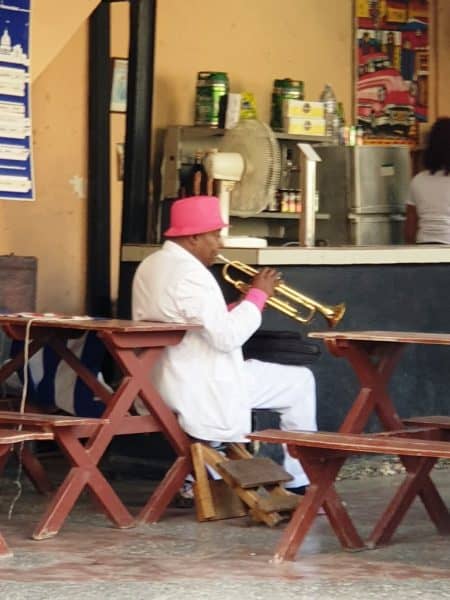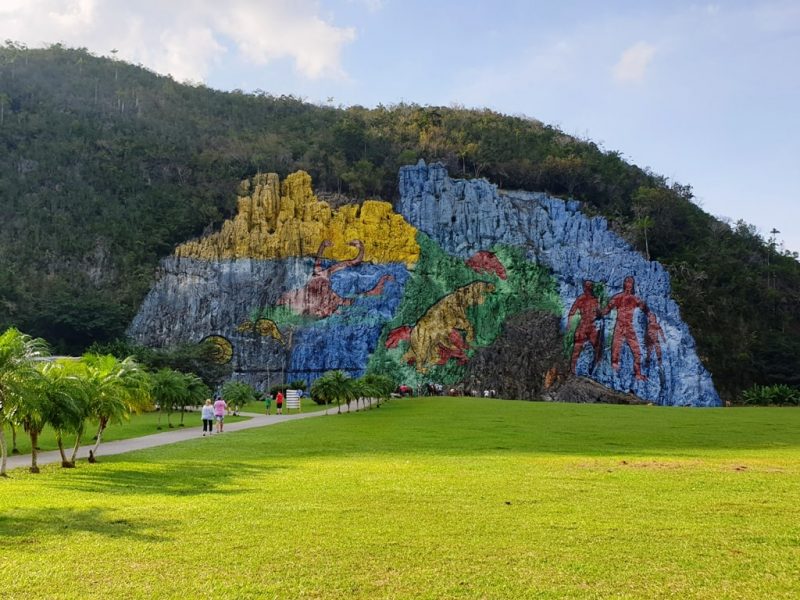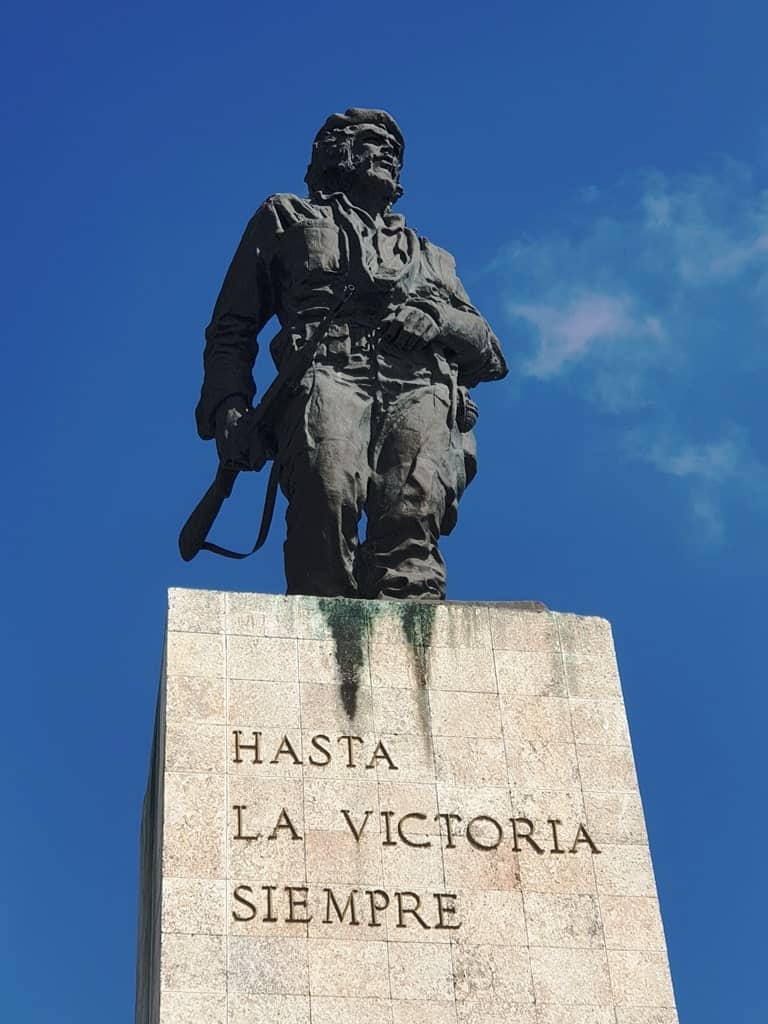Cuba is a unique country in that its colonial past and communist politics have formed the fabric of the nation in such a way that its towns, cities, and countryside, not to mention the way of life, are completely different to that elsewhere. Whereas in other countries you can grab an Uber, log on to free city WiFi, stay at a backpacker hostel, or find creature comforts from home, in Cuba the story is quite different. This doesn’t make it a worse travel destination though, just different. And what it lacks in Western
Spending 10 days in Cuba allows you time to soak up the culture and atmosphere of the place, learn about the country’s tumultuous history, and enjoy the varied landscapes that make Cuba so special.
Read on to discover my 10-day Cuba itinerary that I think strikes the perfect balance between city exploration, countryside travel, and beach relaxation.
Table of Contents
The Best Time To Visit Cuba
Choosing the best time of year to visit Cuba depends on whether you’re visiting to discover the history and culture or whether you’re hoping to spend some time on the beach. If you’d like to do both, then the best time to visit Cuba is between December and April as this is the longest dry period in the country. The dry season can last longer, sometimes into May and June, but these months don’t guarantee beach weather.
In general, December to April sees temperatures sitting between 17-20 at night and 25-32 in the day, with minimal rainfall affecting your trip. While it may be tempting to visit later in the year when the temperatures are more consistently in the high 20s, but the months of May to October also bring about much more rain. September and October are especially bad times to visit as the island is prone to hurricanes during these months.
Detailed 10-Day Cuba Itinerary
Cuba Itinerary Day 1 and 2: Havana

This Cuba itinerary allows you to see a lot of the island, so your first two days in Havana will be quite busy visiting the top sights and beginning to uncover more about Cuba’s rich history and culture.
The main thing you’ll want to do while in Havana is to explore the Old Town (Habana Vieja). This is the heart of the capital and is the area that is home to fascinating plazas, intriguing old buildings, historic bars, and a wealth of museums. Spend your first few days visiting the Plaza de Armas, Plaza de San Francisco de Asís, Palacio de los Capitanes Generales, Castillo de la Real Fuerza, and the Revolution Museum and don’t miss the Museo del Ron Havana Club for a tasty tipple of Cuba’s famous rum!

If you’re interested in Ernest Hemmingway, you’ll also want to visit La Bodeguita del Medio (for the mojitos and food), El Floridita (for the daiquiri), and Hotel Ambos Mundos, the property that Hemmingway called home during the 1930s.


Depending on how many museums you want to visit and the time you have available, you might also want to venture into New Havana; walking along the Malecón promenade towards Vedado. In modern Havana you can explore the Plaza de la Revolucion, the Jose Marti Memorial and the grand El Capitolio building, and perhaps even spend an evening at the famous salsa club Casa de la Música de Miramar.
You might be interested in my detailed Havana itinerary.
Cuba Itinerary Day 3: Day trip to Viñales

It wouldn’t be a true 10-day Cuba itinerary without visiting Viñales, so make sure you take time out to head out to the countryside. Viñales is a small town located in the northwest of the island and is the place to try a Cuban cigar! This is the area where tobacco leaves are grown, and there are many plantations offering authentic tours and tasting sessions.


Visitors can take a day trip to Viñales by hiring a private taxi (preferably in a classic American car) or by joining a group tour. A private day trip gives you more freedom and flexibility but is likely to be more expensive than a group tour.
The journey to Viñales will take around 2.5 hours from Havana, so you’ll want to start your day early so that you can make the most of your time in the mountain town.

When you arrive in Viñales, you’ll want to experience some of the highlights such as a horse-riding tour through the scenic countryside, a visit to a tobacco plantation, a quick stop off at the Mural de la Prehistoria (a bright, colorful wall mural painted on a cliffside) and a visit to the Indios Cave.
Cuba Itinerary Day 4: Havana to Boca de Guama

Yesterday would have been a long day back and forth to Viñales, so the fourth day of your 10 days in Cuba will be more relaxed. Head from Havana down to Boca de Guamá (either by bus, taxi or collectivo) a tourist attraction – set up in part by Fidel Castro – located partway between Havana and Cienfuegos.

There are various things to see and do in Boca de Guamá, the most popular being a boat trip through the mangroves and Laguna del Tesoro (Treasure Lake) which leads to a recreation of a Taino Village, showing the indigenous way of life in the area. This village includes thatched, stilted bungalows and there are statues, murals, and information boards about local traditions such as hunting, fishing, and weaving.

You’ll then continue your journey onwards to Cienfuegos, staying either in a casa particular or one of the few city hotels such as Casa Buenavista (a cool, arty hotel with a bar and 24-hour front desk) or Palacio Baron Balbin (a grand, old hotel with large rooms and quaint gardens and terraces).
Cuba Itinerary Day 5: Cienfuegos

Cienfuegos is a city located on the Caribbean coast of Cuba which features a mix of French colonial and Art Deco architecture. It is therefore quite different from many other towns and cities across the country and is well worth a visit.

The center of Cienfuegos itself is actually a UNESCO World Heritage Site, so you’ll want to start your time here wandering around the city streets, along the Cienfuegos Boulevard and around the Jose Marti Square. In and around the square you’ll be able to admire the Palacio Ferrer, the Palacio de Gobierno, the Teatro Tomas Terry, and the Cienfuegos Cathedral.

Depending on the weather in Cienfuegos, you’ll either want to spend the day simply exploring the city, or you may want to venture out to El Nicho Waterfalls, Rancho Luna Beach, or the Cienfuegos botanical gardens.
Cuba Itinerary Day 6: Cienfuegos to Trinidad

Moving on from Cienfuegos, you’ll travel down to the colorful town of Trinidad. This journey takes around 1.5 hours by car or bus (Viazul) so depending on whether you want to spend extra time in Cienfuegos or not you can choose whether you travel down in the morning or the afternoon.

Arriving in Trinidad you’ll want to head straight to your casa or hotel to drop your bags off before beginning your exploration of the town. It’s a good idea to have accommodation booked before arriving in Trinidad as this saves you the hassle of fighting off the touts that hang around the bus station in town. There are many basic yet charming casas available on Booking.com such as Casa Barcelo and Casa Cidron or you could opt for the only real hotel in central Trinidad – Iberostar Heritage Grand Trinidad.


Exploring Trinidad is all about meandering through the colorful streets, taking photographs of classic cars and interesting buildings and simply watching the world go by. There is a small Cuban revolution museum and visitors can also climb to the top of the bell tower above for a wonderful view of the city. Elsewhere, visitors can enjoy the Plaza Major and La Casa de la Musica, an open-air music venue playing tunes each night.
Cuba Itinerary Day 7: Trinidad
As there are quite a few things to see and do in and around Trinidad you’ll want to spend another day and night here so you have the chance to get out to either Playa Ancon (one of the best beaches in Cuba – just 15 minutes by taxi from Trinidad) or the Topes De Collantes National Park (another great spot for outdoor activities).

Playa Ancon is a long stretch of white sand beach and turquoise water and because there are only a couple of hotels here, there are large swathes of beach left untouched for travelers to enjoy. Visitors can easily spend a day lounging on the sand (popping to one of the hotels for lunch) or just spend a morning/afternoon here heading back into Trinidad for food.

Topes De Collantes National Park is another natural wonder where visitors can enjoy horseback riding, hikes, and waterfall swims. Tours can be booked by your hotel or casa host (and cost approximately 25 USD) and are amazing in the low season when the park is practically empty!
Cuba Itinerary Day 8: Trinidad to Santa Clara and Varadero

Today will be another fairly busy day as you’ll be moving on from Trinidad to Varadero, via the town of Santa Clara. Santa Clara was the site of the last battle during the Cuban Revolution when Ernesto Che Guevara and Camilo Cienfuegos led guerrilla columns into the city to defeat army troops. As such, it is an important destination in Cuban history and is the location of the Monument and Mausoleum of Ernesto “Che” Guevara. Those interested in history will not want to miss this, so make sure you don’t plan this travel day for a Monday as the monument and museum will be closed.

Traveling on from Santa Clara you’ll head towards the beach town of Varadero, your last stop on your 10-day Cuba itinerary. Varadero is one of the few real resort towns in Cuba with an uninterrupted 20km stretch of golden beach just begging to be explored.
There are many hotels to choose from in Varadero but I’d recommend Melia Varadero, a gorgeous beachside hotel with plenty of terraces and gardens to enjoy as well as a swimming pool and hot tub.
Cuba Itinerary Day 9: Varadero Beach Day

Your last full day in Cuba will be a day of pure relaxation allowing you to soak up the bliss of the beach with a cocktail in hand. Your hotel offers a hearty breakfast and then you can while away the hours lying in hammocks or on sunbeds by the pool, wandering along the warm golden sands or enjoying live music from the hotel band.
Cuba Itinerary Day 10: Varadero to Havana
Sadly, you’ve now come to the end of your 10 days in Cuba and you’ll have to travel back to Havana to take your onward flight home. Your hotel can easily arrange a transfer to the airport, or if you have a late flight and want to squeeze in a bit more time in Habana Vieja you can take a taxi into the city.
This is your last chance to pick up any souvenirs (or rum), soak up the sun, and wiggle your hips to some salsa rhythms before returning home.

Tips about traveling to Cuba
Traveling in Cuba is quite unlike being a tourist elsewhere, so there are a few things to keep in mind throughout your trip, so you don’t receive too much culture shock when you arrive.
You must get a visa or tourist card before you arrive
Most travelers visiting Cuba will need to obtain a visa or tourist card before they travel (unless you are a citizen of one of these countries). This can be easily obtained from the Cuban Embassy in your home country, by post, or sometimes through an airline or travel agency but must be purchased and collected before boarding your flight to Havana.
It is vital that you check you have received the correct documentation before travel as some airlines will refuse entry onto the plane if you do not have the correct visa. You may also be asked for proof of return or onward travel, proof of medical/travel insurance, proof of finances (usually at least US$50 per day), and possibly also at least two months’ validity on your passport from your date of arrival.
Departure Tax
There used to be a departure tax of 25 CUC that you were required to pay when leaving the country, but recently this has started to be included in the airfare to make it easier for travelers. However, it is important that you check with your airline or ticket provider to ensure this has been paid for in advance. If not, you could be asked to pay this on departure which may mean having to get out additional cash at the airport.
Internet in Cuba
Free WiFi in Cuba doesn’t really exist, so on the whole internet access is poor, unreliable, and expensive.
The internet can only be accessed in Cuba by buying an ETECSA WiFi card and signing in to a hotspot or by logging on (any usually paying for) hotel WiFi. WiFi cards can be purchased from an ETECSA store (you’ll need your passport and will have to wait in a long line), from hotels, or as it more likely the case, from an ETECSA card ‘salesmen’ (read: hustler) in the street. These guys sell WiFi cards at a much more inflated rate, but this is often the quickest, easiest way of buying an internet card, especially if you are somewhere more remote.
It’s also worth pointing out that the internet in Cuba is restricted and censored by the government so do keep this in mind when browsing.
It is a communist country
Last but not least, it’s worth mentioning that Cuba is very much still a communist country. This means that almost all businesses and jobs are government-owned and therefore most people receive a very basic wage. This includes everyone from cleaners to surgeons and everything in between. Many people in Cuba rely on rations to get by and there are very few regular supermarkets or stores. This means it’s much more difficult to pick up supplies you may have forgotten, so it’s important to pack quite carefully to ensure you don’t forget anything essential.
In addition, there is plenty of propaganda still displayed throughout the country, and discussing politics isn’t really the done thing. Speaking badly of Fidel Castro, Che Guevara or any other communist party members is simply not a good idea.

How To Get Around Cuba
There are various ways to get around Cuba and deciding on which option is best for you depends on how adventurous you’re feeling and what your budget is. If you want a smooth, organized journey (as much as is possible in Cuba) then you may want to opt for a fully-organized guided tour. This could be a private tour in which you have a driver and a car throughout your whole trip or a group tour where you travel around the island by minibus with your group and tour guide.
Alternatively, you could opt for solo travel, which would mean navigating your way between towns and cities by renting a car, taking a public bus, taking a private taxi, or getting in a collectivo (shared taxi).
Car rental can usually be organized before you arrive in Cuba, or you can speak to someone at the airport or at your casa/hotel to help arrange it. If you want to take a bus, Viazul is the most reliable option and journeys generally cost around $4-5/hour. Private taxis are, of course, more expensive, but this can be a good choice if you want to get door-to-door service in a hurry.
Intercity taxis usually cost around $30/hour and you’ll want to confirm a fixed price before you set off. Collectivos on the other hand, are relatively cheap, but this is because you’re squished in a car with at least six other people. These tend to be similar prices to taking the Viazul bus, but it does mean you’re able to travel by classic car.
Types Of Accommodation in Cuba
Different accommodation options are slowly becoming more common in Cuba but casa partiulares are still the most popular form of accommodation available. Casas are essentially B&Bs in which you stay in a local Cuban person’s home ($20-30/night) enabling you to engage with locals and enjoy a hearty breakfast before setting off to your next destination.
Staying at a casa particular is the most authentic option, as it gives you a chance to practice your Spanish and learn about the local way of life. Casas can now be booked online in advance (usually through Airbnb). If you don’t have anywhere booked for your next destination, casa particular owners have a chain of connections available and will happily book you into their friend’s accommodation for your next stop.
However, if you’d rather a more regular travel experience, then there are hotels available. These tend to be a more expensive option and they can be booked up well in advance, so make sure you plan ahead if this is what you want to do.
All you need to do now is book your flight and you’ll be ready to experience Cuba in style. This 10-day Cuba itinerary covers most of the highlights; balancing beach, history, and exploring the great outdoors, so you’ll have a once-in-a-lifetime trip to remember!

